This website uses cookies so that we can provide you with the best user experience possible. Cookie information is stored in your browser and performs functions such as recognising you when you return to our website and helping our team to understand which sections of the website you find most interesting and useful.
In focus: Going against the grain
Douglas Blyde meets the inspirational Mark Reynier, whose mission to magnify the terroir in spirits owes much to his background in wine.
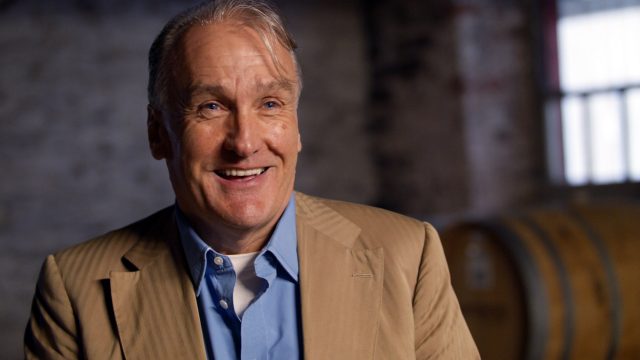
Mark Reynier’s interest in wine stems from his grandfather who, having left France in 1902, started J.B. Reynier, a wine shipping company in Pimlico which, from 1919, imported wine in barrel. Retail shops in Soho and Tachbrook Street ensued. ‘After the war, my father took the business over, developing the wholesale side.’ Hence, Reynier’s first job was in the cellars cleaning as well as bottling, corking, labelling and distributing wines to London hotels. ‘In 1982, my father sold the company to traditional West Country brewer, Eldridge Pope, which was subsequently subsumed into Whitbread & Co.’
While learning the brewing ropes at Eldridge Pope, Reynier received his first whisky experience, assisting in the ‘batting’ of the brewery’s own label whisky. ‘I remember the venerable looking butts of Highland Park and the heady aromas as they were emptied into a large vat in the damp, dark, low-ceilinged cellar.’ Then came a retail job, setting up and running two wine bar, wine shop hybrids at Tower Hill and the Old Bailey. ‘We offered cheese, charcuterie, and excellent pâté alongside Burgundy in a market which favoured Bordeaux.’
By 1985, with selling experience under his belt, Reynier went his own way, starting a retail operation in the form of La Reserve, Knightsbridge. The motivation stemmed from a new era of young Burgundian winemakers who, says Reynier, ‘rejected cooperative winemaking and the agrochemical excess born out of surpluses from the war where munitions were repurposed into fertiliser to napalm the soil.’
Going against the grain, the roster of 80 growers which Reynier worked with had often trained at Roseworthy or UC Davis. ‘They learnt the science of winemaking from the Aussies and Californians and came back to France in the 1980s armed with modern knowledge of stainless steel, extended fermentation, wood policies and canopy management. This was the decade of the renaissance of Burgundy – the rediscovery of terroir – and I was there.’
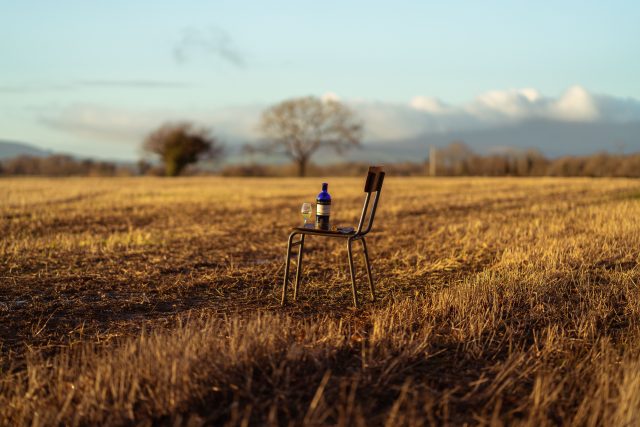
If the early eighties were the renaissance of the great French vineyards, the same period was the ‘very naissance’ of single malt whisky, says Reynier. ‘It hadn’t really been marketed as a category in its own right. Then, just 0.1 percent of whisky was sold as single malt.’ But as a consequence of the recession of 1980/81, the single malt whisky market as we know it escalated. ‘The cat was accidentally let out of the bag when the big bulk stockholders reviewed and rebalanced their stock portfolios.
The stocks they got rid of were from distilleries they had shut down during the previous OPEC oil crisis of 1973. In my view that was a whisky nadir, when it started to lose its soul.’ Old distilleries were shut down while production was consolidated in ‘bigger, more efficient. more industrial’ ones, says Reynier. ‘Things became uber commercial. Why buy new barrels when you can just reuse old ones – again and again and again – and use Paxarette, or E150 to disguise, to compensate?’
And it wasn’t only the brutal efficiency of distillation at ever larger sites at the expense of the smaller, older distilleries: barley, the very essence of whisky, the source of its flavour, was now earnestly propagated for yield and disease control. ‘Barley flavour took a back seat. It was the end of a more innocent age.’
An underground movement started. Ardent on discovering new single malt whiskies based on finite stocks of defunct distilleries, the single malt fan emerged. ‘You could suddenly see barrels from the 1960s from long-gone names.’ Indie bottlers blossomed. ‘I started Murray McDavid in 1986 which would bottle up whiskies from this age of innocence, being natural, old, un-fiddled around with and cheap as chips.’
Islay Calling
That spring, Reynier recalls visiting a particularly poorly attended London Wine Fair. ‘It had been moved to Olympia and no one had turned up for some reason. I remember being accosted by Scotsman, Jack Milroy, who asked me to put my business card in a tombola and I won the prize: a bottle of whisky worth £1,000.’ On going to collect it at Milroy’s, Greek Street, Reynier, ‘out of politeness’ agreed to nose other whiskies with Milroy, ‘even though I had been brought up as a wine lover first and foremost and hadn’t even been allowed to start Sunday lunch until I had identified the wine in the decanter.’
Most of what Reynier nosed at Milroy’s was off-putting to him, being ‘all about peat and iodine.’ However, one proved to be a Damascene dram. ‘It had all the criteria you’d look for in a great wine – it was harmonious.’ It turned out to be from Bruichladdich. ‘As I left, I remember thinking I’ve discovered something. And if I have one whisky in my shop it’ll be the unpronounceable Bruichladdich – the whisky for wine drinkers.’
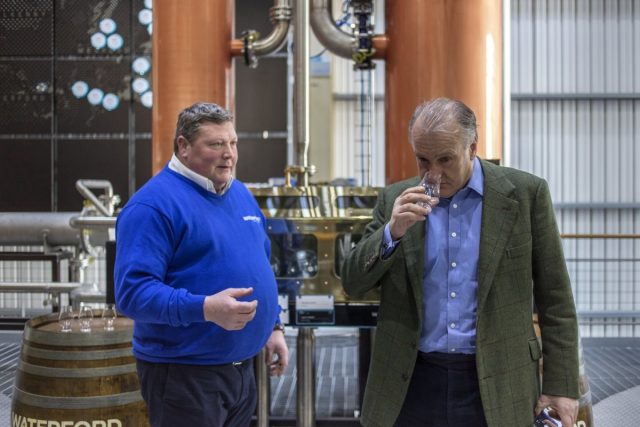
In 1989, Reynier embarked on the only holiday he has ever been on with his brother. ‘We cycled along the West Coast of Scotland each carrying four golf clubs. We visited Springbank distillery, Campbeltown then got to Islay to see Bruichladdich with a view to having a look around. I thought they’d be pleased to see me because I’d put it on the map for Londoners; they’ll wine and dine me!’ The reality was dismaying.
‘It was all locked up, corroded, shuttered with just the words, “PLANT CLOSED NO VISITORS” on the gate sign.’ Then Reynier spotted someone in the courtyard. ‘I shouted, “I’m your best customer, I came all the way by bicycle,” and he said “no, you can Fuck Off!” So disillusioned was I by the reality versus the image in my mind that I vowed to chuck out all my stock of Bruichladdich when I got back home. But something nagged at the back of my mind. How can this “plant” have produced such an extraordinary spirit? Why not let me have a go?’
Armed with the ‘arrogance of youth’ being 25 years old at the time, Reynier hatched an idea. ‘Ridiculously, I decided to buy the distillery and do it myself.’ Reynier wrote to Bruichladdich’s owners. ‘I said, “sell it to me” and of course they said “no.” Then, when an industry had shut down, it wasn’t expected to start up again. This continued every January for 10 years until then owners, Jim Beam, responding to my comment that it was absurd that the distillery was closed – “use it or lose it” – they said, “okay, we’ll sell it to you.”’
With backing from his customers at La Reserve, Reynier raised the money to buy Bruichladdich, securing it on 19th December 2000. ‘Essentially, we bought a stock of one million litres of maturing whisky back to 1964 with a Victorian distillery thrown in for free which we managed to get running seven months later.’ Reynier wanted to apply what he terms a ‘wine trade logic’ to Bruichladdich. ‘It was a Battle Royale from day one with the arch traditionalists who were less keen on some of my new ideas.’
The Dark Side
Reynier is a devoted believer that, like the grapevine, barley is influenced by where it is grown. ‘In many cases, nineteenth century distilleries have their roots in crofts, then farms, being purpose built. The ones with good barley land – a good terroir – grew; others failed. In early 1800s there were 20 small scale Islay distilleries using all the available arable land on the island. Peak Islay had been achieved. By 1880, the economics of scale and materials had changed resulting in purpose-built Bruichladdich and Bunnahabain in 1881 using imported coal and barley. 20 distilleries had become seven in fifty years.’
With Bruichladdich, Reynier ensure all the barley came from Scotland. While it may sound logical that Scottish whisky ought to me made using Scottish-sown barley, that is very often not the case. ‘Whisky fans have been spoon-fed an inculcation of propaganda that it’s all about how we distil it and the wood – and don’t worry about barley, because brands don’t want to have to tell you most of it comes from Ukraine.
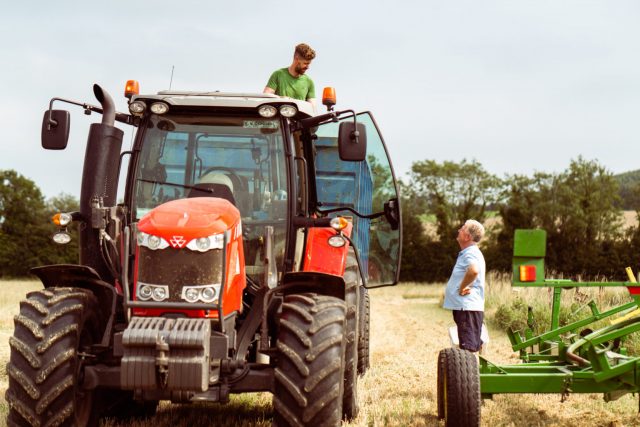
Appallingly, we’ve wasted 50 years climate-adapting barley to grow it further and further afield instead of looking for an evolution of flavour. Since the 1970s, barley has been developed to be as disease resistant and high yielding as possible, to support production of the cheapest litre of alcohol possible with the rest of the budget spent on spinning the yarn on the story of the day. No wonder my father said, “spirits are the dark side.”’ Yet the consumer has become more astute. ‘And we were transparent at Bruichladdich, even putting up video cameras in 2000 to show what was going on in the distillery. And for a while it was the biggest-selling whisky in propagandist Russia given their citizens’ thirst for truth.’
In 2012, Rémy Cointreau purchased Bruichladdich for £58m representing the company’s first move into the premium single malt Scotch whisky market. ‘I didn’t want to sell then but my colleagues decided it was too good an opportunity to miss. I hadn’t finished what I set out to do and I was angry. It cost me good friendships, one since schooldays. I had invested in Bruichladdich emotionally, mentally as well as financially. It had been a huge culture shock dragging my family from London to a remote Hebridean island.’
Free from ‘all that baggage’, Reynier looked to Ireland, ‘where I had been told by Bruichladdich’s chief engineer that it had the best barley he had seen in 40 years.’ There, Reynier founded Waterford distillery which he describes as a project for the open-minded: for wine drinkers ‘where terroir isn’t a scary, poncey, elitist term but merely a glorified gardening concept.’ Inherent to the project is an obsession with terroir.
‘With whisky, there are only three raw ingredients, and one of those is water, so it’s not too hard to guess where the flavour comes from. The industry says it’s from the machines which is like saying forget the grapes when it comes to wine. The simple reality is barley is what makes it the most complex spirit in the world. Which is why we set up a definitive study to prove once and for all that terroir exists in barley and whisky distilled from it.’
With the cooperation of the Irish ministry of agriculture, an American data analyst, a Greek doctor, Irish professor and Scotland’s leading indie laboratory, Reynier set out over three years to see if terroir as a concept exists, and specifically whether it exists in barley. The peer-reviewed research paper was published in the scientific journal, ‘Foods’ in February and demonstrated that there are in excess of 2,000 flavour compounds present in barley which had been grown in Ireland and micro-malted, micro-fermented and lab distilled.
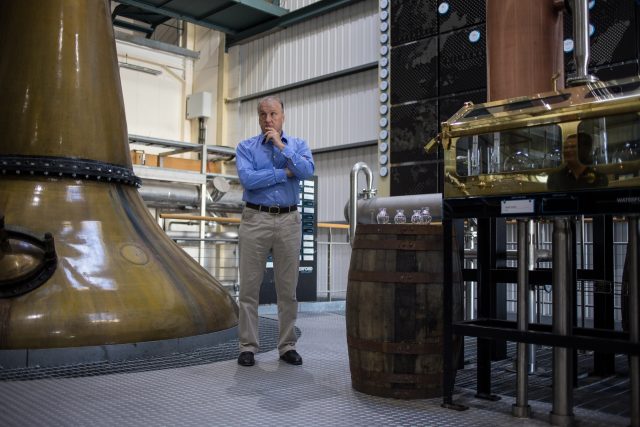
‘I knew the cynicism and power of the whisky industry and had to prove terroir once and for all. Having done that one would think that’s the end of it, but they have now moved the goalposts. First it was ‘terroir cannot exist in barley’; then it was ‘terroir might exist in barley but not in the spirit’; then ‘okay, it might exist in the spirit, but it cannot in mature spirit…’ So we haven’t stopped there. Coming out next January, the second paper will demonstrate what happens to flavour profiles once in barrel.’
Petits Vins
With Waterford, Reynier set out to make whisky honestly, correctly and transparently. ‘It is wine trade influenced. How do you make the most profound whisky, I asked? Let’s see what the Bordelaise and Champenois do. I take the concept of Remi Krug who once said to me, “for the vintage it is the good Lord that decides; but for the Grand Cuvée, I’m God.” Or the Grand Vins of Bordeaux – the big wine made up of lots of little ones, each grown on its own terroir, vinified and barrelled separately only to be assembled 18 months later as The Big Wine.
‘In our case the Single Farm Origins are like the petits vins, the steppingstones to The Waterford Cuvée which will come out this autumn. The whole project of Waterford is based around the creation of component petit vins, each one terroir-derived, where 5,000 tonnes of barley are divided between 40 single farm origins ripening over three-to-four weeks.’
To process these parcels with integrity the logistics are impressive. Reynier purpose-built a substantial entrepôt with the Dolton brothers in Kilkenny, ‘divided into individual farmer bins, so each farm’s barley has a home to go to.’ Upon arrival it is dried overnight to preserve quality and stored in its own bin, before going to malting farm-by-farm during the year at a formerly mothballed malting facility built by Vickers.
‘Each farm gives 75 tonnes of malted barley dried down from 130 green tonnes ‘off the field’ which lose weight when we get rid of the husks, screenings, and moisture meaning you lose almost half the volume by the time it’s malted. So, if you want to do a million litres, we need 5,000 of those green tonnes. We call the entrepôt our cathedral because it has quite an ecclesiastical look.’ Thus far, Reynier has worked with almost 100 single farms ‘and will bring others on as younger farmers get excited by what we are doing, and new terroirs are discovered. The result is an unprecedented library of demonstrable, provable origins.’
Waterford is based at a former Guinness brewery, ‘closed when Guinness consolidated their operations in Dublin, shutting down satellite breweries.’ A brewery had existed on the site since 1792, with the modern version built as recently as 2004 and in operation barely a decade. ‘This riverside brewery has more stainless steel then you can shake a stick at. An Aladdin’s cave of modern equipment built to Diageo’s exacting specification. And they go big. The scale is unbelievable with whole sections dedicated to yeast propagation.’
Not being ‘greedy’, Reynier runs stills slowly, ‘at only 400 litres an hour for the middle cut meaning less volatility. ‘By taking a miserly margin of a middle cut we deliberately leave about 50,000 litres per annum of spirit on the table which we choose not to collect.’ Crucial to the project is Reynier’s drive to work with heritage varieties of barley, farmed organically and biodynamically, ‘because we’re not trying to make the cheapest but best litre of alcohol possible. While for most of the industry the PR focus is on the iconic stills, at Waterford it is on the unglamorous fermentation.’
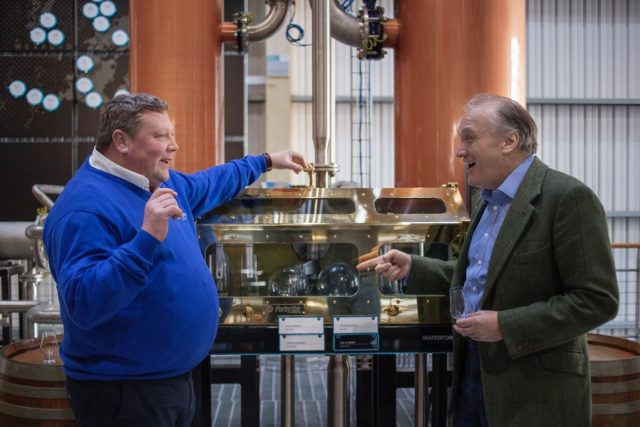
Sweet Spot
Reynier is particularly proud that Waterford is the only owner of a ‘tungsten hydro mill’ which extracts flavours from barley with ‘incredible precision’ by operating anaerobically underwater. ‘And we work with mini pneumatic presses, of which we have 54 in a row to squeeze out every drop of wort for terroir extraction. At the beginning we didn’t know how to interpret the fancy machinery, but as we have amassed more experience and data over the years we’ve incrementally bespoked the whole set up.
‘And six years on, it’s bespoke all the way through because why would one malting setting work for different farms, let alone different harvests?’ Hence, for different origins of barley, ‘to get at the sweet spot’ each farm is fermented individually. ‘There is no one-sized hat here – temperatures and times vary. We know from the vineyards that extending fermentation makes for purer flavours so with the technology we take four times as long as others.’
Each farmer uses Reynier’s bespoke software to record weather, soil, treatments and harvest dates followed by malting and fermenting and warehousing. This information is available to consumers via the ‘Teireoir Code’ on each bottle. ‘In total, there are an extraordinary 8,000 data points per farm.
As a result, we can see that sandier soils lead to fruitier barley, while silica is more clove, and where the topsoil is higher in limestone there are spicier flavours.’ Before this focus on terroir, Reynier claims distilleries had lost their connection to the land where they were. ‘Yet terroir and whisky were always there, only it wasn’t called terroir then but farming. And I suppose I’ve always been a bit of a frustrated farmer.’
Each year, Waterford’s whisky stocks gain maturity. ‘But if we’re winning awards for our three-and-a-half or four-year-old spirit then that’s telling me that we’re on to something: cutting corners doesn’t work.’ Reynier often works with Burgundian oak casks. ‘They have thicker staves giving more bang for the buck and more pan grillé flavour than relatively rectilinear American which confers notes of crème brûlée.’
And don’t expect whiskies from Waterford showing ‘a finish’. ‘Why would we need the reflected glory from a fancy Château? Why “finish” when we started right in the first place?’ Reynier also uses virgin Limousin as well as virgin American oak ‘which is where the natural colour comes from.’ Meanwhile, former vin doux naturel casks bring ‘sweetness.’
For the Cuvée, which is happening now in time for an autumn release, 23 single farms are being assembled. ‘This version is our attempt at making a definitive Waterford, the most profoundly pure, outrageously complex and deliciously harmonious, barley-in-your-face Waterford single malt possible.’ Of the undoubtedly exciting project, Reynier notes that, in face of the no fewer than 1,653 distilleries now making whisky in the world, Waterford is one of the few battling for the soul of single malt.
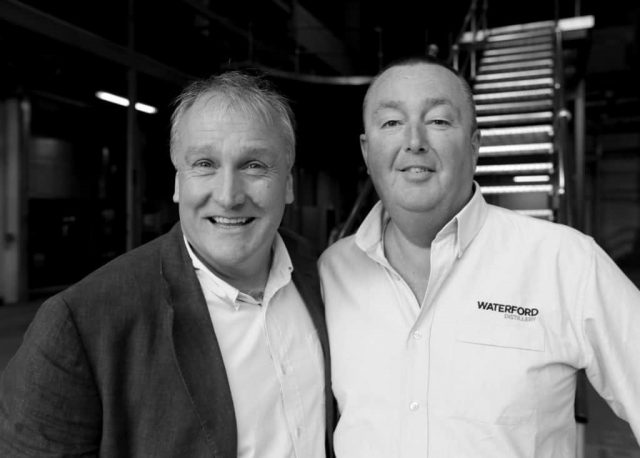
‘Our terroir project has caused huge consternation because the big players had it their way for so long. While there are certainly those that don’t want to know about terroir, are uncomfortable with the concept, there are others who are fascinated to learn more and really engage with the idea. But they’re all talking about Waterford and whisky terroir.’
Rum Time
Reynier’s other project, ‘Renegade’, concerns a much warmer island: the volcanic island of Grenada. There are surprising similarities of thought between the two projects. ‘It started with a simple question: can we make a rum as complex as a single malt? If so, it may well be the catalyst for serious rum which the sector has so desperately lacked,’ suggests Reynier. ‘In the 60 countries which produce rum, there are few rules or regulations. Most is distilled from generically available molasses.
‘Provenance is therefore nigh on non-existent. So, I’ve designed a distillery from scratch to process sugarcane propagated from varieties developed in the late 1950s and 60s. On this lush island extraordinary pyroclastic gas flows have created iron-rich bands in the soil, crazy juxtapositions between colluvial and alluvial soils on bedrock of both volcanic basalt and sedimentary limestone. We have planted seven varieties of cane over 12 farms leading to 60 definable mini-terroirs. Compared to Ireland’s widespread glacial drift soils, this is “terroir in your face.”’
In a somewhat back-to-front arrangement, Reynier first had to propagate cane on an island that had turned away from it, to prove he could grow enough to make it worthwhile to build a distillery. ‘We began growing in 2016 and only started distilling last September. We can sell the new spirit as a prelude: John the Baptist preparing the way. To the main show.
Like Waterford with the single farm origins, we have started to lay down the component terroir-derived rum spirits, only this time we can release them as new spirit (“Pre-Cask” white rum) from autumn 2021 to compare and contrast. It’ll be fun to see what happens to these spirits once they have spent some time in good wood with fast Caribbean maturation. The definitive Renegade Cuvée, an assemblage of these component terroir-derived rums will probably come out in 2024.’ Using both pot and retort and a modern column-style still designed for batch distillation, Reynier can, ‘like a clarinet’ play a lot more tunes, ‘all with integrity and transparency.’
It is tempting to believe Reynier’s philosophy in action on harnessing flavour through geography – of planting spirits – will resonate, although he is not so hopeful. ‘I imagine everyone will start talking about terroir until the word is corrupted. There will be meaningless images of fields of waving barley like at the beginning of Gladiator. Some brands might even buy farms to show to the journalist. “Meet the farmer.” But marketing won’t change how most litres of alcohol are made. Just the story.’
However, such cynicism will never stop Reynier from his crusade to farm spirits. ‘As with Waterford, laying down ingredients with intrinsic traceability has been blood, sweat and tears with huge upfront investment. And I’ve nearly gone bust twice. But the rum industry is wanting us on the scene because they can see that we will bring the category a sense of authority which they’re unable to give to it. With all that pent up enthusiasm, something needs to change.’

